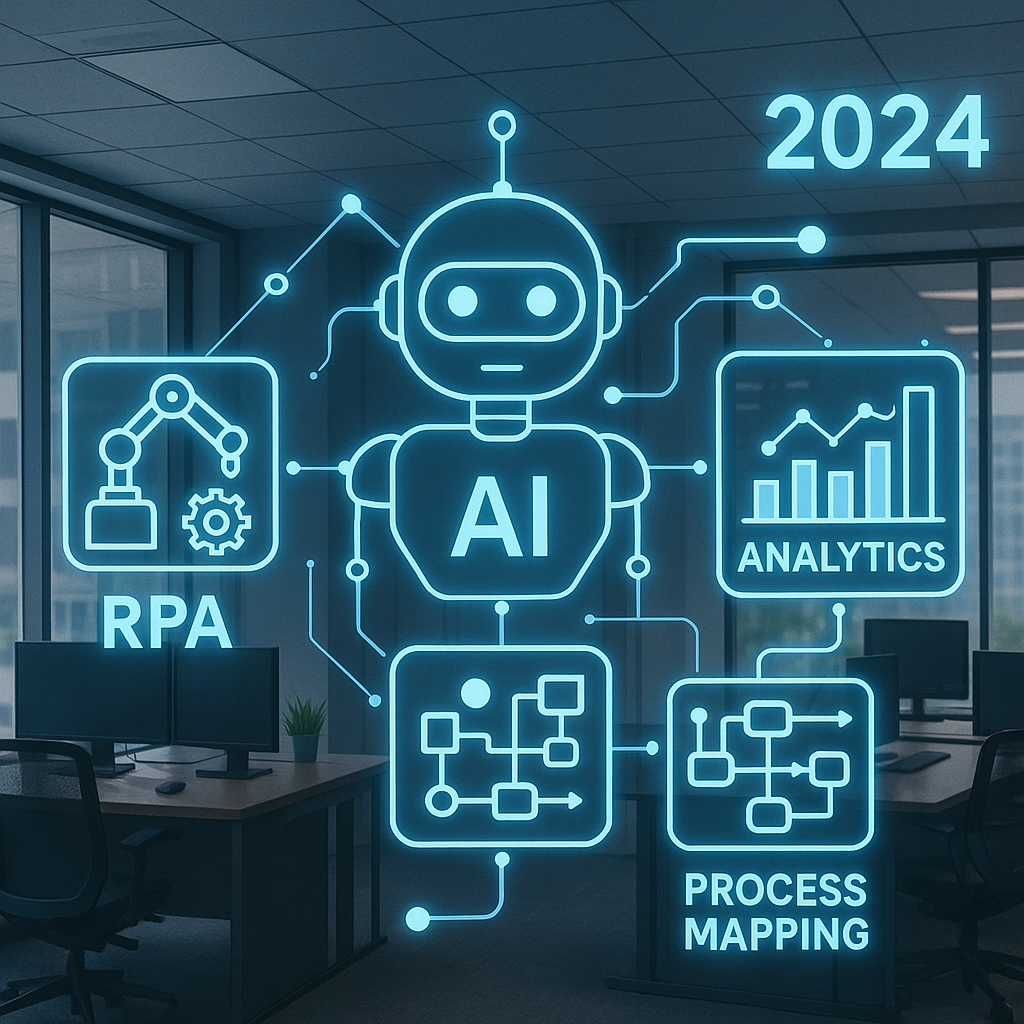How Hyperautomation Is Reshaping Business Operations in 2024

Hyperautomation has become the buzzword of business transformation between 2023 and 2024, captivating executives and digital leaders alike. As organizations strive to outpace competition and navigate rapid digital change, the convergence of artificial intelligence (AI), machine learning, robotic process automation (RPA), and advanced analytics has turned hyperautomation from a futuristic concept into an urgent strategic imperative.
What is Hyperautomation and Why Now?
First introduced by Gartner, hyperautomation refers to the use of advanced technologies—beyond traditional automation—to automate complex business processes end-to-end. Unlike legacy automation that focuses on standalone tasks, hyperautomation orchestrates a mix of tools (AI, RPA, low-code platforms, process mining) to drive continuous process optimization.
The 2023–2024 surge in adoption is driven by:
- The need for greater operational resilience post-pandemic
- Maturing AI and no/low-code automation platforms
- Intense cost pressure and workforce shortages
- Board-level demand for digital innovation
The Building Blocks: Key Technologies of Hyperautomation
Hyperautomation combines multiple solutions into a powerful ecosystem. Among its foundational tools are:
- AI/ML: Powers decision-making, document understanding, and complex data analysis.
- Robotic Process Automation (RPA): Executes repetitive, rules-based tasks at scale.
- Process Mining: Discovers process inefficiencies and automation opportunities in real-time.
- Intelligent Document Processing: Automates data capture from unstructured sources (invoices, emails, contracts).
- Integration Platforms (iPaaS): Connects disparate apps and data sources, breaking silos.
Real-World Business Impact: Case Studies
Insurance Claims Processing: A multinational insurer adopted hyperautomation to speed up claims validation. AI-powered document classification, RPA for routine checks, and process mining led to claims cycle time dropping from weeks to hours, with improved auditability.
Retail and eCommerce: A leading retailer combined RPA bots, chatbots, and AI-driven analytics to automate order management and customer support. This freed staff for high-value work, reduced order errors, and cut costs by over 25% within a year.
Success Factors (and Pitfalls to Avoid)
To truly benefit from hyperautomation, organizations in 2024 are focusing on:
- Clear process mapping: Understanding what to automate and why, leveraging process mining insights.
- Strong change management: Proactively reskilling staff and addressing automation anxiety.
- Scalable governance: Establishing guardrails as automation scales across business units.
- Continuous optimization: Adopting a mindset of ongoing improvement rather than "one-and-done" automation.
A common pitfall in early projects: automating poor processes instead of first reimagining or optimizing them.
Looking Ahead: Hyperautomation as the New Operating Model
While 2024 is a tipping point, hyperautomation is set to grow as a central pillar of digital business strategy. The difference between organizations just "doing automation" and those building hyperautomated, self-improving workflows will dictate competitiveness in the years ahead.
Ready to explore hyperautomation in your own business? Start by mapping your end-to-end processes and engaging business and IT stakeholders as co-owners of automation success.